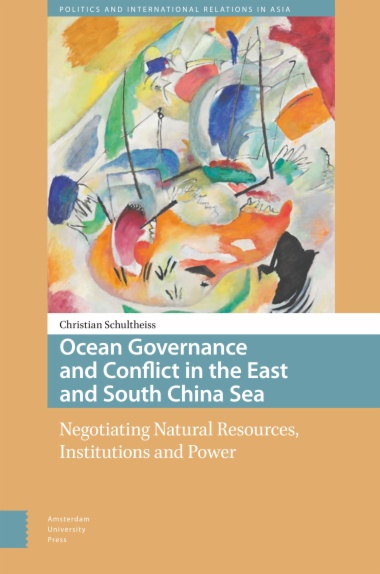This book tells the story of the negotiations between China, Japan, Taiwan, the Philippines, Vietnam and other Southeast Asian countries about the East and South China Sea disputes. Tapping into formerly classified and newly available primary sources, the book meticulously tracks these negotiations and their sudden U-turns. It is a story about the promises and perils of cooperation – as much about pragmatic, gradual and surprisingly resilient approaches to conflict resolution and ocean governance as it is about the expansion of states’ bargaining power through institutions. The book hinges on the question of when and why disputing parties reach agreement on joint oil and gas development, fisheries and codes of conduct, and when and why negotiations end in impasse. It is the first comprehensive and theoretically informed study of decades-long dispute settlement efforts in a central region of the Indo-Pacific where the expansion of China challenges the law of the sea and regional security.
- Cover
- Table of Contents
- Acknowledgements
- I Introduction – Three Decades of Negotiations in the East and South China Sea Disputes
- II Natural Resource Institutions, Conflict Management, and the Perils of Cooperation
- 1 Conflict Management and Natural Resource Institutions
- 1.1 Cooperative Response and Continuation of Conflict by Other Means?
- 2 Power – How Institutions Can Be Weaponized
- 2.1 Three Mechanisms: Precedent without Legal Force, Restrictions on Conflict Behaviour, and the Manipulation of Risk
- 2.2 Precedent without Legal Force and Focal Points
- 2.3 Restrictions on Conflict Behaviour, Coalition Formation, and Access
- 2.4 The Management and Manipulation of Risk
- 2.5 Power Asymmetries and Institutions that Alter Power
- 3 Alternative Explanations: Legal Entitlements, Domestic Politics, and Fragmented Coalitions in Negotiations
- 3.1 The Nine-Dash Line and Negotiations with(out) Legal Entitlements
- 3.2 The Role of Domestic Politics and Nationalism in Negotiations
- 3.3 ASEAN as a Fragmented Coalition in Multilateral Negotiations
- 4 Methodology
- III Institutions for Marine Natural Resources in the South China Sea
- 1 China and the Philippines
- 1.1 The Joint Marine Seismic Undertaking: From ‘Breakthrough for Peace’ to Liability
- 1.2 Resource Sharing after the JMSU: Philippine Law vs Joint Jurisdiction
- 1.3 Joint Development after the South China Sea Arbitration?
- 1.4 The Politics of Sino-Philippine Joint Development Reconsidered
- 1.5 Fisheries in Sino-Philippine Relations: Incidents, Impasse, Scarborough Shoal, and Arbitration
- 2 China and Vietnam
- 2.1 Boundary Delimitation and Trans-Boundary Cooperation in the Gulf of Tonkin
- 2.2 The Sino-Vietnamese Fisheries Agreement 2004
- 2.3 Extending the Gulf of Tonkin Cooperation into the South China Sea
- 2.4 Gulf of Tonkin Agreements Reconsidered
- 3 The Philippines and Taiwan: Comprehensive Pressure, Minimal Cooperation
- 3.1 The Fisheries Law Enforcement Agreement and its Barriers
- 4 Brunei and Malaysia: From Confrontation to Boundary Delimitation and Resource Sharing
- IV Institutions for Marine Natural Resources in the East China Sea
- 1 China and Japan
- 1.1 Energy without Politics? Joint Development Negotiations 1985–2008
- 1.2 From ‘New Historic Starting Point’ to Conflict – the Principled Consensus
- 1.3 The Sino-Japanese Fisheries Agreements in the East China Sea 1950–2000
- 1.4 The Senkaku/Diaoyu Islands, the Fisheries Agreement, and the Management of Incidents 2010–2017
- 2 The Republic of Korea, Japan, and China
- 2.1 The Republic of Korea and Japan: Fisheries Agreements 1965–1999
- 2.2 The Sino-Korean Fisheries Agreement: Effective despite Rampant Violations?
- 2.3 An Innovative Approach? Three Overlapping Bilateral Fisheries Agreements
- 3 Japan and Taiwan
- 3.1 Agreement between Rivals, Impasse between Partners?
- 3.2 The Japanese–Taiwanese Negotiations Reconsidered
- 4 The Impact of Fisheries Agreements on Incidents and Coast Guard Behaviour in the East and South China Sea
- V Institutions for Conflict Behaviour in the East and South China Sea
- 1 China and ASEAN Members: The Long March towards a South China Sea Code of Conduct
- 1.1 The First March towards a Code of Conduct: 1992–2002
- 1.2 The Second March towards a Code of Conduct: 2003–2016
- 1.3 The Third March towards a Code of Conduct after the South China Sea Arbitration: Procedural Novelties and Old Divisions
- 1.4 Code of Conduct Negotiations Reconsidered
- 2 Institutions for Crisis Management in the East and South China Sea
- 2.1 The Japan–China Air and Sea Communication Mechanism 2008–2020
- 2.2 Air and Sea Communication Reconsidered
- 2.3 The Code for Unplanned Encounters 2003–2018
- 2.4 Institutions for Crisis Management Reconsidered
- VI Conclusions
- Appendix: Overview of Cases
- Bibliography
- Index
- List of Maps
- Map 1 Claims in the South China Sea5
- Map 2 The Joint Marine Seismic Undertaking (JMSU)49
- Map 3 Maritime boundary agreement and fisheries agreement in the Gulf of Tonkin228
- Map 4 Areas for joint surveys in the Gulf of Tonkin244
- Map 5 Overlapping continental shelf claims and joint development in the East China Sea8
- Map 6 Map of one profile of China’s continental shelf claim in the East China Sea15
- Map 7 Fisheries agreements in the East China Sea76
- Map 8 Japan–Taiwan Fisheries Agreement160
- Map 9 Common fishing zones (details)185
- List of Tables
- Table 1 Fisheries agreements and proposals in the East and South China Sea
- Table 2 Cases in the South China Sea
- Table 3 Cases in the East China Sea
- Table 4 Cases on conflict management in the East and South China Sea

